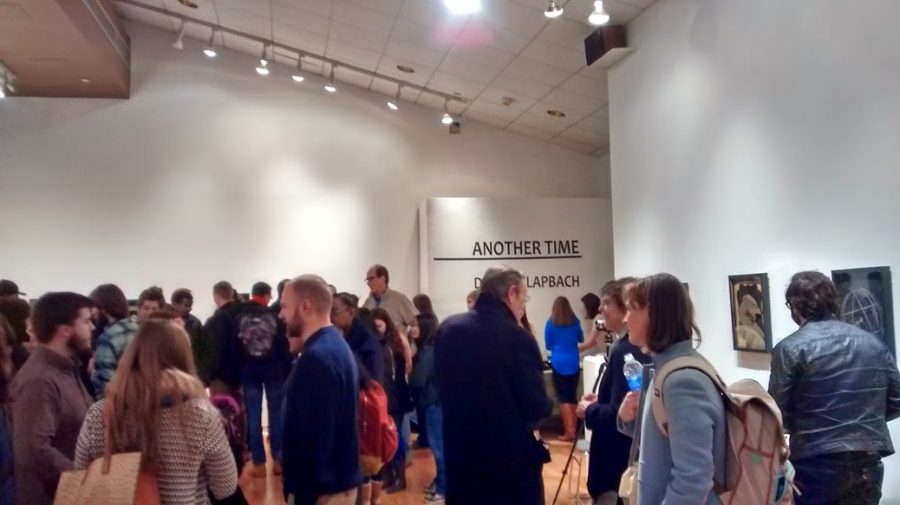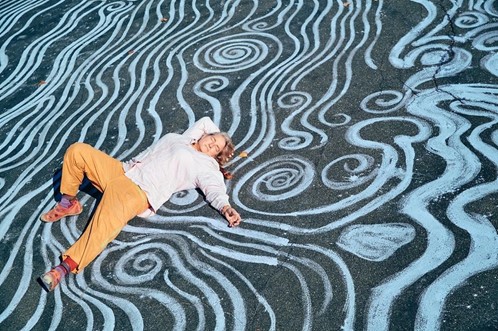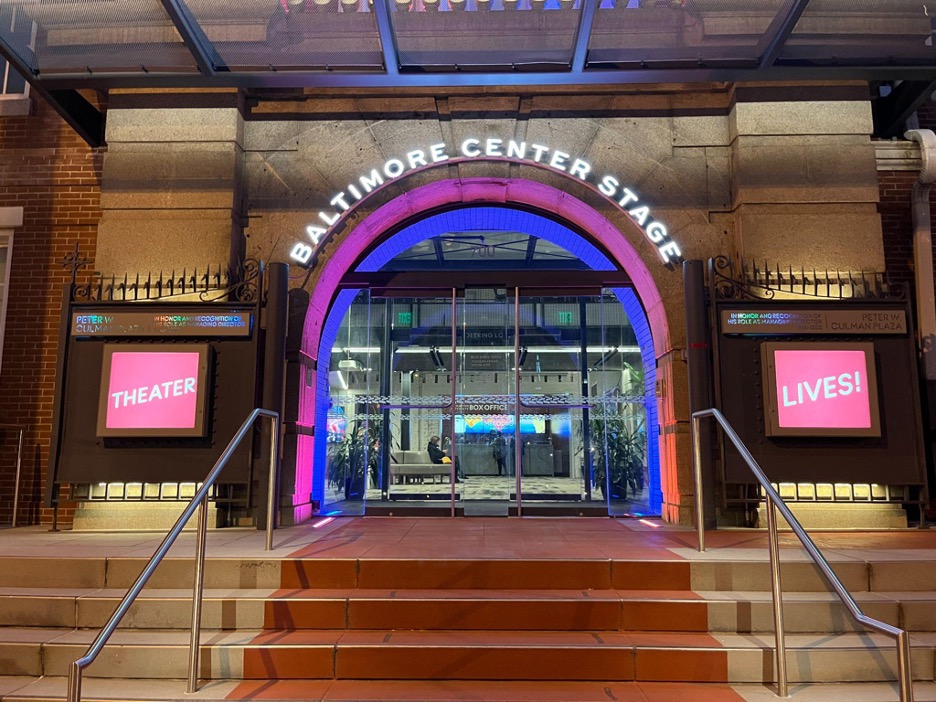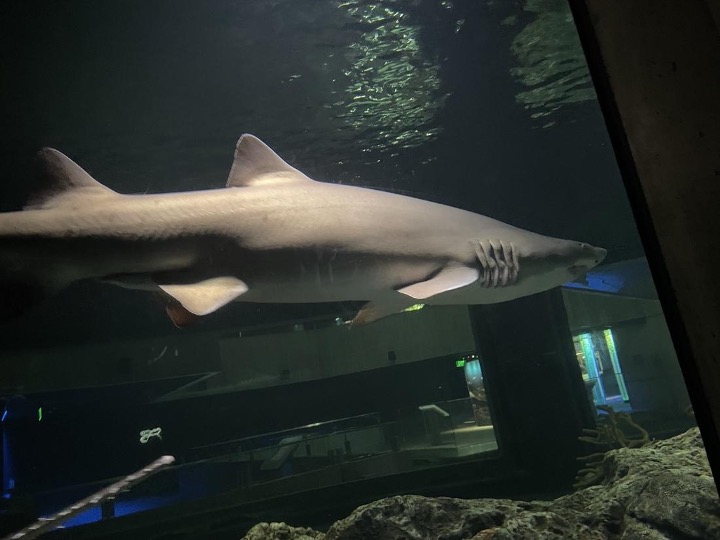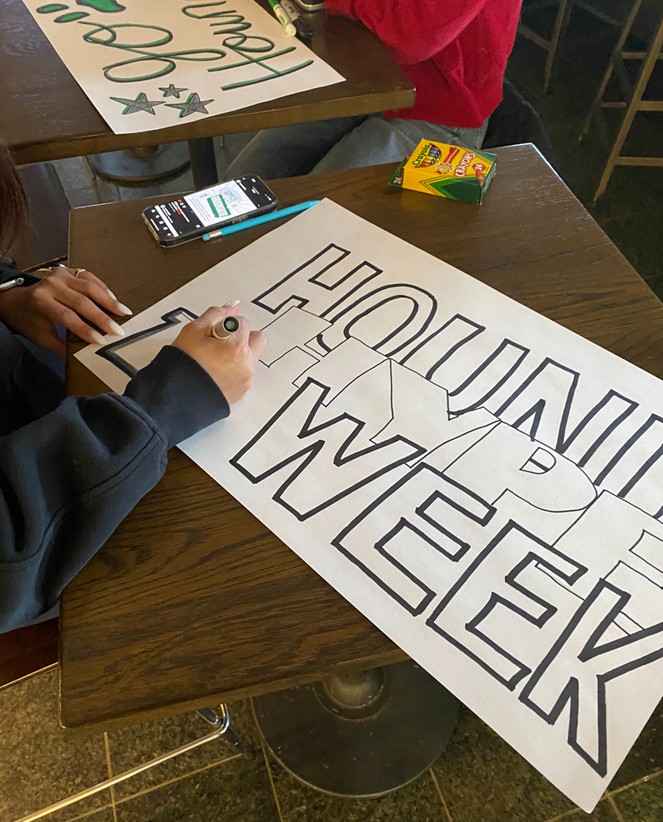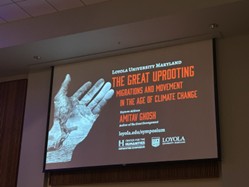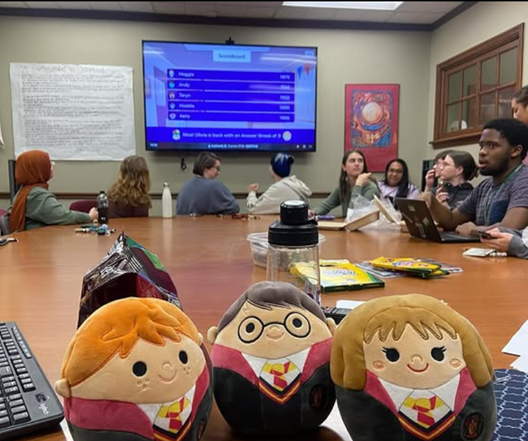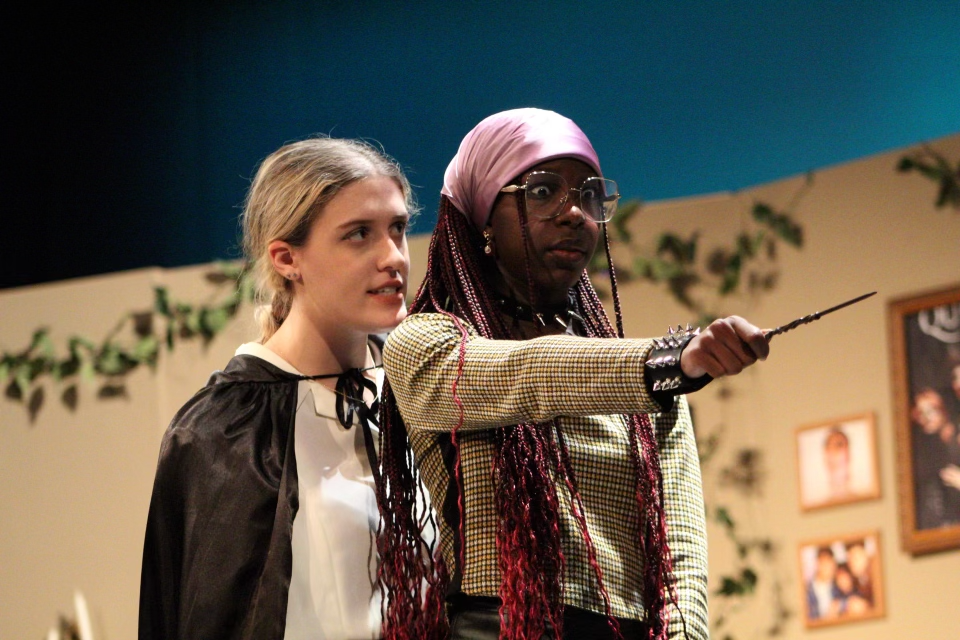The pictures hang on the wall like dormant windows, showing the characters of worlds unknown. They bear calculated disjunctions, familiar images of the ordinary with fairytale characters orphaned in new landscapes that are not of their world.
Dan Schlapbach’s Another Time exhibit displays photographs, showing pictures that continuously challenge the perceived notions of what they are. They bring movement to static perceptions, malleability to fixed ideas. The works are finished, but in progress: They revel in paradoxes.
Though they exist within their own time and universe, the pictures themselves seem timeless; this is by design. Schlapbach, a professor in Loyola’s Fine Arts department, utilizes relievo ambrotypes combined with digital images to create temporal nowheres, works free from any dating but their own. The creations host a series of characters such as Rapunzel, Baba Yaga and many from old fairy tales and folklore. In telling these stories to his daughter, he was surprised by the depths of their darkness, something that’s often lost in their adaptation.”There’s a foundation to them that’s not just simply a story, but a basis behind that story, a construct that’s trying to explain difficulties of life,” Schlapbach said.
The lessons from these stories, then, are not to meant to be hidden, but embraced, brought forward and contemporized. There is still much to learn from them, as the darkness is inevitable, but not dooming.
In seeing his daughter play with these fairytales and other stories, Schlapbach became fascinated by the way a child mixes many fictions to make one, uniquely of its own kind, while still honoring the sources. He sought to emulate that with Another Time approaching many existing works with the same inclusive imagination. Anything works. One piece entitled “The Colony” features a backdrop used from an old science textbook, displaying a village from medieval folklore set against a moonscape. By decontextualizing the objects, Schlapbach lapses into this surrealism, influenced by artists such as Joseph Cornell and John Heartfield. The presence of the ordinary seamlessly within the extraordinary inspires a double-take amongst those who view it.
With the collodion process behind the ambrotypes, light-sensitive chemicals are used on wet plate to capture the images with the camera. The fragile process dries quickly, necessitating careful precision and planning in a short amount of time. It can lead to mistakes, but for Schlapbach, the volatility is exciting in a way that digital creation couldn’t ever be, “There’s something to the preciousness of them, that they are truly unique.” Each one of the pieces is impossible to duplicate through the same technique.
The same effect could have been achieved with modern camera equipment and editing, but it would not have had the same elusive essence. The fragility of the process can be serendipitous, admitting many natural blemishes and artifacts that could not have been achieved through contemporary digital manipulation. The flaws give them life and, paradoxically, a certain kind of realism despite their dreamy look. The result is a disorienting marriage of means, but one that works within its own world: Analog and digital, old and new, fantasy and reality. The two poles are constantly coalescing. Familiar shapes and characters are removed from their worlds and placed into another, the lifeless pictures on the wall become visions of another place, another time.
The exhibit runs through Feb. 8 at the Julio Fine Arts Gallery in the Student Center. Schlapbach plans to continue exploring his vision with continued experimentation through the format he has established.
Photo courtesy of: The Greyhound / Christian Margarida








































































































